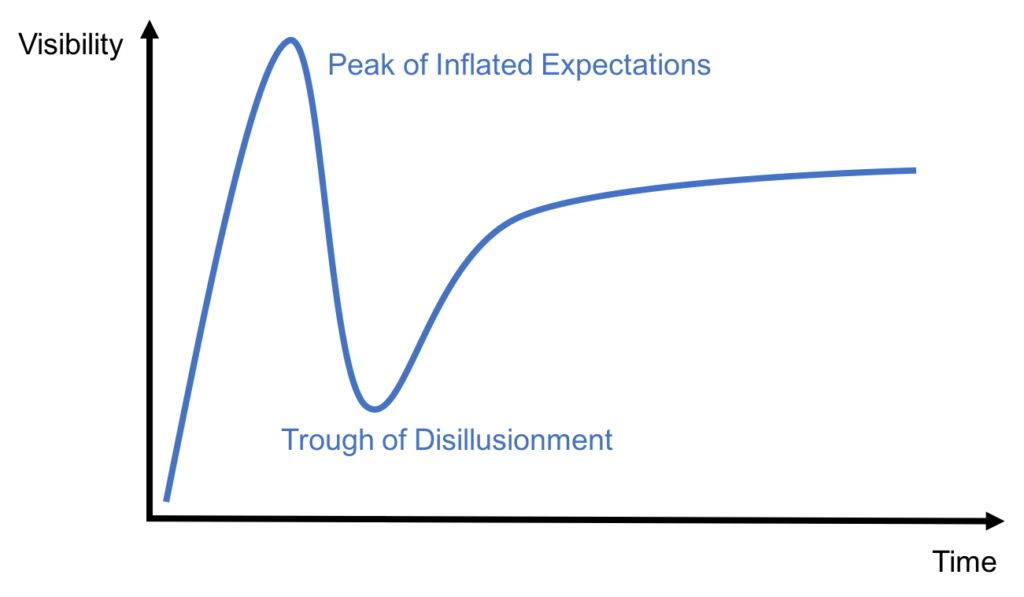Where are we in the Gartner hype cycle for the Industrial Internet of Things (IIoT)? The first step in answering this question is to not confuse it with the hype cycle for general IoT, which applies to consumer IoT technology—where adoption works quite differently than in the industrial realm. Once that distinction has been made, a more specific question to ask, if you understand the Gartner hype cycle, is: How far into the ‘Peak of Inflated Expectations’ is the IIoT?
Clearly this peak has not been reached yet. I say this because new conferences are popping up, start-ups are being incubated and media attention around IIoT remains high. We’re even seeing new technology applications introduced for industry, such as virtual reality, which have, until recently, been reserved for consumer IoT discussions. In short, IIoT excitement is still growing.
Peaks and Troughs
It’s worth noting that there is some valid criticism of Gartner’s hype cycle methodology, particularly in their perceived amplitude of the peaks and troughs associated with their model. But I don’t want to get into how accurately the Gartner hype cycle models the IIoT. Instead, I want to highlight the actions we can all take to avoid huge swings in our expectations around IIoT.
In other words, what can we do to avoid both the “Peak of Inflated Expectations” and “Trough of Disillusionment?” We can do this by avoiding a technology-first approach to standardization.
A Use Case Focus
Instead of developing for technology’s sake, let’s instead develop based on actual use cases. Two years ago, we at Profibus/Profinet International (PI) announced the creation of an Industrie 4.0 Working Group. PI Working Groups consist of volunteers from a wide spectrum of companies developing our standards to meet the needs of industry. From the outset, the first step for this group was to define use cases and then adapt or create technologies as a second step.
To better understand how our Industrie 4.0 Working Group approached the task in front of them, it’s worth noting that that they did not take the “LET’S INTEGRATE GIGABIT ETHERNET NOW!!” approach. That would be an example of a technology-first approach. Instead, they chose to focus on the ways in which industrial Ethernet networking could be improved by increasing its robustness and quality of service while also decreasing latency. By investigating use cases first, we are able to take a holistic view to help us prioritize advancements. Gigabit Ethernet certainly is very important, but other technologies may be better suited for integration in the near term; for example, furthering development of Time Sensitive Networking.
Another example to help illustrate the value of use case driven standardization is answering the question: How can we make machine-to-machine or machine-to-cloud integration easier? A technology-first strategy might be to send Profinet directly to cloud-based data analytics software. But by looking at use cases first, we can take a step back and see that existing technologies—like OPC UA—do this very well already. So, there is no need to reinvent the wheel.
Developing standards solely for technology’s sake only exacerbates potential peaks and troughs in the hype cycle of the IIoT. Keep an eye out for this both in technologies you may be considering as well as in how you approach your internal plans to tackle IIoT and Industrie 4.0. By focusing on actual use cases, together we can selectively implement solutions that solve real world problems and advance industry.
Michael Bowne
Deputy Chairman
PI
This article originally appeared in Automation World magazine.

